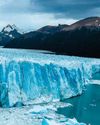SMART SURVEILLANCE
Issue 205
|How It Works UK
How smart CCTV uses data to scan and analyse a scene, identifying objects and people in milliseconds

Built into architecture or tucked out of sight, surveillance cameras can go unnoticed.
However, in many public spaces, such as town centres, roads, public transport hubs and private properties, they're always watching. These cameras remain in operation 24 hours a day, keeping a record of daily life to help deter illegal activity and antisocial behaviour or provide proof when it occurs.
The earliest closed circuit television (CCTV) could only livestream activity and required a security guard or police officer to observe multiple screens simultaneously in real time. The technology served as a way for one person to monitor more than one location at once, but didn't use data to make sense of the images it was streaming. Instead, it was up to human observers to notice suspicious behaviour and alert police to illegal activity.
Today, computer engineers have built systems that almost entirely take over the human supervision role. As sequences of events play out in front of the camera, a computer system can predict potential threats that might follow. It can also analyse the faces of people in crowds to help find missing people or track suspects of crime.
For collecting and processing this data, modern intelligent CCTV has a range of sensors and camera types to collect clear imagery and extract as much information as possible. This includes infrared cameras for night surveillance, which produce imagery by detecting infrared wavelengths that are invisible to the human eye. The camera then converts the infrared signature into a visible image to 'see in the dark'.
هذه القصة من طبعة Issue 205 من How It Works UK.
اشترك في Magzter GOLD للوصول إلى آلاف القصص المتميزة المنسقة، وأكثر من 9000 مجلة وصحيفة.
هل أنت مشترك بالفعل؟ تسجيل الدخول
المزيد من القصص من How It Works UK
How It Works UK
20 WEARABLE HEALTH TRACKERS
Whether you strap a wellness coach to your wrist or weave subtle sensors into your clothes, these devices are revolutionising how we track our health
9 mins
Issue 210
How It Works UK
SUPERPOWERED PLANTS
The world of plants is vibrant and diverse, just like this book.
1 min
Issue 210
How It Works UK
SECRET STORIES OF LOST BEASTS
We're all aware of the mighty dinosaurs that once roamed Earth, but there are so many weird and wonderful species that have been lost to time.
1 min
Issue 210

How It Works UK
ALL ABOUT BLIMPS
Is it a bird? Is it a spaceship? No... it's a non-rigid airship
2 mins
Issue 210
How It Works UK
SUPER QUESTERS MISSION: RAINFOREST MAGIC
Join adventurers Leo, Lilli and Bea as they transform into superheroes and journey to the rainforest in the pursuit of knowledge.
1 min
Issue 210

How It Works UK
HOW THE MIGHTY MAMMOTH RULED THE ICE AGE
Meet the prehistoric giants that roamed the Arctic Circle thousands of years ago
4 mins
Issue 210
How It Works UK
Have they found LIFE ON MARS?
Although it's by no means certain, scientists are slowly accumulating evidence that life once existed on the Red Planet
2 mins
Issue 210

How It Works UK
HOW FAST DO GLACIERS MOVE?
The speed at which a glacier flows depends on its mass, the depth and slope of the underlying rock bed and friction.
1 min
Issue 210

How It Works UK
HOW IN-FLIGHT WI-FI WORKS
This technology allows you to scroll to your heart's content while killing time at cruise altitude
3 mins
Issue 210

How It Works UK
HOW WIGWAMS WERE BUILT
Discover the construction and living conditions inside these traditional domed dwellings
1 mins
Issue 210
Listen
Translate
Change font size

